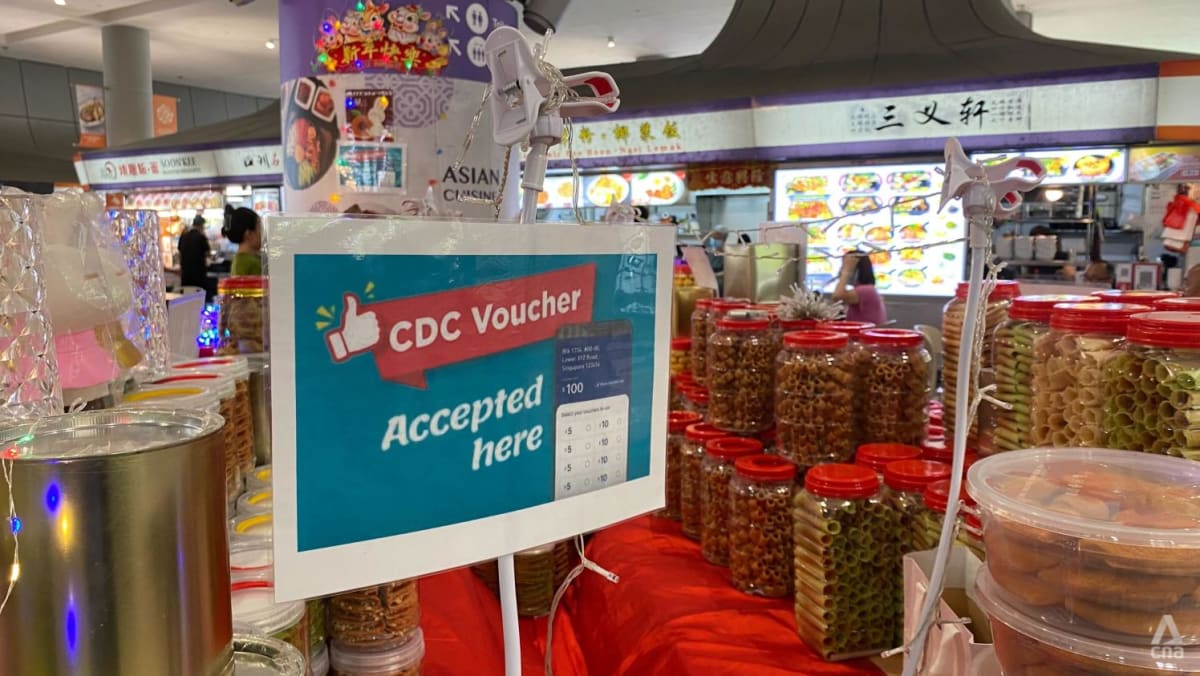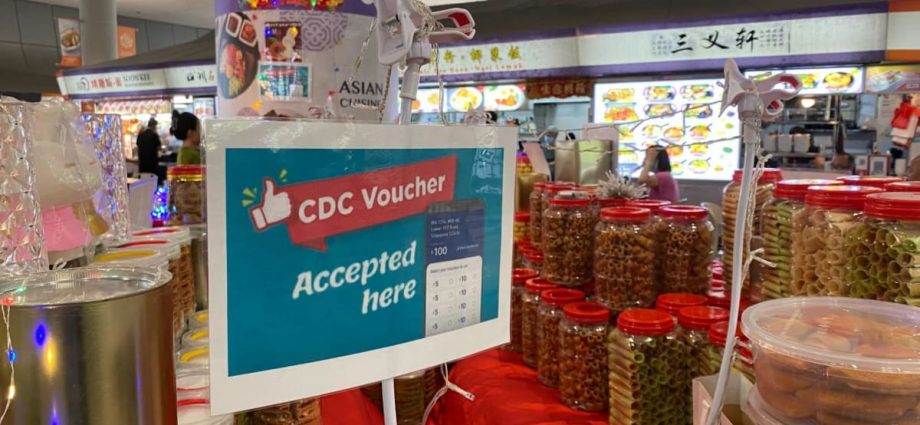
SINGAPORE: More than 1 million Singaporean households claimed their Community Development Council (CDC) vouchers within three weeks of their launch, Minister of State for Trade and Industry Low Yen Ling said on Wednesday (Jan 25).
That is more than 80 per cent of households in Singapore, she said, adding that the speed and rate at which the vouchers have been claimed “speaks to the positive reception” of the scheme.
The CDC Vouchers Scheme 2023, which marked the third tranche of digitally distributed vouchers, was launched on Jan 3.
“We have received positive and favourable feedback because this amount is an increased amount,” Ms Low told CNA938 during a Tech Talk segment
Each Singaporean household was given S$300 that can be used at heartland stores and hawker stalls and five supermarket chains. Households were given S$100 each in the previous digitally distributed tranches.
Giving an update on the previous two tranches, Ms Low, who is also chairman of the Mayors’ Committee and mayor of the South West District, said that 97.5 per cent of the 1.22 million Singaporean households claimed the vouchers amounting to S$222 million.
The vouchers go “a long way” to defray the household expenses of Singaporeans, she said.
“At the same time, the way that it is designed in partnership with GovTech and many other government agencies, it actually catalyses spending in the heartland enterprises and also the hawkers,” she said.
There are 20,300 merchants and hawkers across the island who are on the scheme, Ms Low added.
DESIGNING THE VOUCHER SCHEME
The vouchers were distributed digitally for the first time in December 2021, with 1.3 million households receiving S$100 each. More vouchers were disbursed in May last year.
Ms Charmaine Lee from GovTech said the vouchers were designed to be inclusive.
“It’s a really intentional design … to make sure that we wouldn’t leave anyone behind even if we’re moving towards a digital scheme,” said Ms Lee, the product manager for Redeem SG under the Open Government Products team.
Two of the considerations were that residents should be able to have a paper alternative if they do not have a mobile phone, and they would not need to download a mobile app to use the vouchers, she said.
Before the launch of the first tranche, her team, along with the CDCs, ran eight user trials to ensure that the vouchers were easy to use, she added.
“What we found was that fixed denominations are much easier to use compared to a wallet model and this also allows residents to be able to use their vouchers the same way, whether they’re using digital vouchers or paper vouchers,” she said.
The team was also mindful about making sure that accepting the vouchers is a straightforward process for the businesses, Ms Lee said.
“It’s very fast. If you have spent on your own vouchers or you’ve seen other people spend vouchers, it takes less than a second actually to scan the customers’ vouchers,” she said.
THE JOURNEY TO ADOPTION
While the scheme has the support of the businesses, it was no easy feat.
“It’s really a very, very massive exercise onboarding one by one,” Ms Low said, adding that the merchants and hawkers needed persuasion.
The exercise required them to demonstrate to each and every hawker and merchant what the scheme is about, and teaching them how to install and use the app, she said.
The merchants and hawkers have turned out to be the strongest ambassadors of the scheme, telling their customers about the vouchers and encouraging them to use the alternative payment method instead of cash, Ms Low said
“They are actually our most persuasive ambassadors now. I’m really happy to see that and we think it has also gone some way to help to catalyse the further digitalisation of our hawkers as well as our heartland enterprises,” she said.
Tech Talk with Daniel Martin airs weekdays, 3pm on CNA938.

